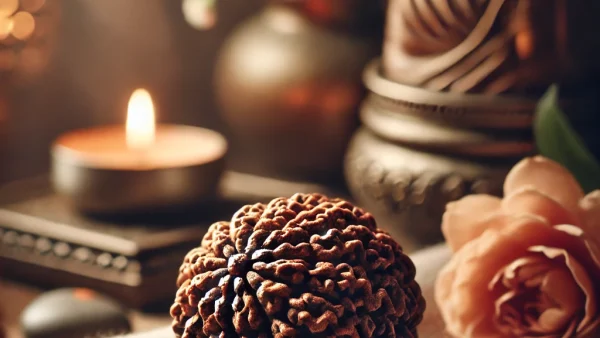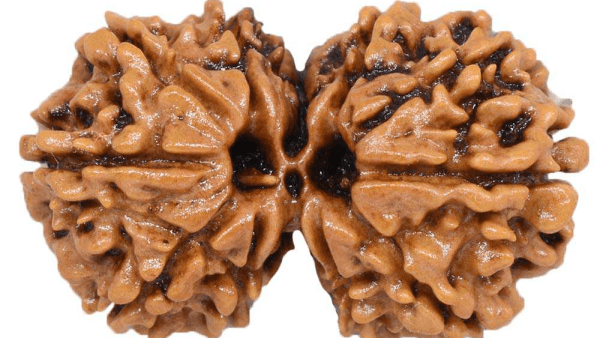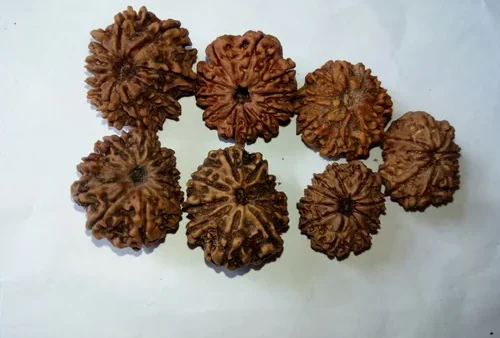The question of whether one can wear rudraksha beads at a funeral is complex, rooted in spirituality, cultural traditions, and personal beliefs. While rudraksha beads are a powerful spiritual symbol closely associated with Lord Shiva and used extensively in Hinduism for meditation, protection, and inner peace, their use in specific contexts like funerals has raised thoughtful considerations. In this article, we’ll explore the background, historical perspectives, and practical guidelines on wearing rudraksha in solemn circumstances such as funerals, helping you make an informed decision.
What Are Rudraksha Beads? Understanding Their Spiritual Significance
Rudraksha beads, derived from the seeds of the Elaeocarpus ganitrus tree, have been revered for centuries in Hinduism. The beads are traditionally believed to hold divine energy associated with Lord Shiva and are said to aid in meditation, focus, and protection from negative energies. As sacred items, rudraksha beads are often worn as malas (prayer beads) or bracelets, with various faces or mukhis signifying different types and purposes of these beads.
Each rudraksha bead is classified by its faces (5 mukhi, 6 face, 7 face, etc.), with each variety believed to bring specific spiritual and mental benefits. A 5 mukhi rudraksha, for example, is widely worn for peace, protection, and spiritual growth, and is suitable for regular wear as it symbolizes the five elements of nature. Given these spiritual associations, wearing rudraksha often becomes a personal choice deeply intertwined with one’s own beliefs, and, as with all sacred items, it’s essential to respect traditional practices surrounding their use.
Cultural and Traditional Beliefs Regarding Wearing Rudraksha at a Funeral
In Hindu culture, rudraksha beads are not just jewelry but are sacred items that connect the wearer with divine energies. However, when it comes to funerals or mourning events, traditional beliefs suggest removing sacred items, including rudraksha beads. The general guideline is that any object representing power, energy, or life—such as gemstones, yantras, or rudraksha—should not be taken into spaces where death is mourned.
According to scriptures like the Shiva Purana and the Rudraksha Jabal Upanishad, the energy in rudraksha beads should not intermingle with the somber energy of death ceremonies. As such, it’s customary in many traditions to remove these items before attending funerals or visiting a cremation ground. This practice is rooted in the belief that sacred items retain pure, high-vibrational energy that may conflict with the somber and transitional energies present at a funeral.
Personal Beliefs and Local Customs
While Hindu scriptures provide traditional guidelines, the decision to wear rudraksha to a funeral can also be influenced by personal beliefs. Some people find comfort in the spiritual protection of rudraksha, wearing it even during challenging times, including attending a funeral. For those who feel strongly connected to their rudraksha and believe it provides strength, it can serve as a source of solace.
On the other hand, specific regional or familial customs may prohibit wearing rudraksha or any sacred item during mourning as a sign of respect for the deceased. Observing these customs can prevent potential misunderstandings or cultural missteps, especially in communities where such practices are strictly followed.
Expert Opinions on Wearing Rudraksha During Mourning
Many priests and spiritual gurus advise against wearing rudraksha at a funeral, as it is believed to be a time to focus solely on the soul’s journey rather than on personal protection or spiritual power. Some spiritual leaders suggest that rudraksha beads, when worn in spaces of mourning, may lose their positive energy and require ritual cleansing or even disposal.
A widely followed practice among devotees is to immerse a rudraksha mala in clean flowing water if it has been taken to a funeral by accident. This act is accompanied by a prayer for forgiveness, acknowledging that the wearer unintentionally brought the sacred item into a space of mourning. This tradition, called kshama yachna, allows devotees to continue their spiritual journey without any perceived disturbance to the sanctity of the rudraksha.
Practical Guidelines for Wearing Rudraksha in Specific Situations
To help navigate this decision, here are some general guidelines that honor both tradition and personal beliefs:
- Understand Your Intention: If your reason for wearing rudraksha is deeply personal and provides comfort, it may feel right to wear it, even during a funeral. However, keep in mind the traditional beliefs and potential perceptions of others in attendance.
- Respect Local Customs: Observing community customs is essential, especially in collective mourning spaces. If your community or family strongly advises against wearing rudraksha, consider honoring these customs out of respect for shared beliefs.
- Ritual Cleansing of Rudraksha: If you have worn your rudraksha mala at a funeral, you may choose to perform a cleansing ritual afterward. Immerse the beads in flowing water or purify them through prayer, restoring the energy of your rudraksha.
- Consult a Spiritual Guide: For those unsure about specific situations, consulting a knowledgeable spiritual guide can provide clarity. They may suggest ways to keep the rudraksha energetically protected without compromising your beliefs.
Can Wearing Rudraksha at a Funeral Disrupt Its Spiritual Power?
Though rudraksha is believed to retain its energy regardless of location, sacred texts like Shrimad Bhagwatam emphasize the importance of maintaining its purity. While there is no scientific evidence proving that the energy of rudraksha changes at a funeral, cultural beliefs suggest that a funeral’s solemn environment might clash with the high vibrational energy that rudraksha is known to hold. Many believe that, when exposed to mourning spaces, the rudraksha can lose its potency, which is why some choose to replace their beads or perform a purification ritual after attending a funeral.
Alternatives for Spiritual Protection During Funerals
If you seek spiritual protection during a funeral but want to respect traditional beliefs, consider carrying a small talisman or amulet that does not hold the same spiritual charge as rudraksha. Alternatively, focusing on a simple mantra or silent prayer can offer comfort and protection during challenging times without the need to wear sacred items.
Balancing Beliefs and Practices
The decision to wear rudraksha at a funeral ultimately depends on balancing traditional guidance with personal comfort. While some cultural practices advise against wearing sacred items in spaces of mourning, personal belief plays a significant role, allowing individuals to decide based on their own spiritual connection to rudraksha.
Whether you choose to follow tradition or personal intuition, it’s essential to treat rudraksha with reverence, remembering that it is more than an accessory—it’s a sacred tool for connecting with divine energy. If you are uncertain about the appropriateness of wearing rudraksha in particular situations, consulting with a knowledgeable spiritual guide can offer valuable insights.
For those looking to explore authentic rudraksha beads, spiritualguru.lk provides a wide range of options, from 5 mukhi and 6 face rudraksha malas to specialized rudraksha bracelets. With careful selection, each item can be a powerful addition to your spiritual practice.
Final Thoughts on Wearing Rudraksha to a Funeral
Rudraksha, with its deep-rooted spiritual significance, deserves respect and consideration in all contexts. By acknowledging the traditional beliefs surrounding these beads and your own sense of spiritual practice, you can make thoughtful choices that honor both your inner beliefs and the customs of your community.







Pingback: Is Black Magic Real? Unveiling Myths, Facts, and Perspectives - Spiritual Guru